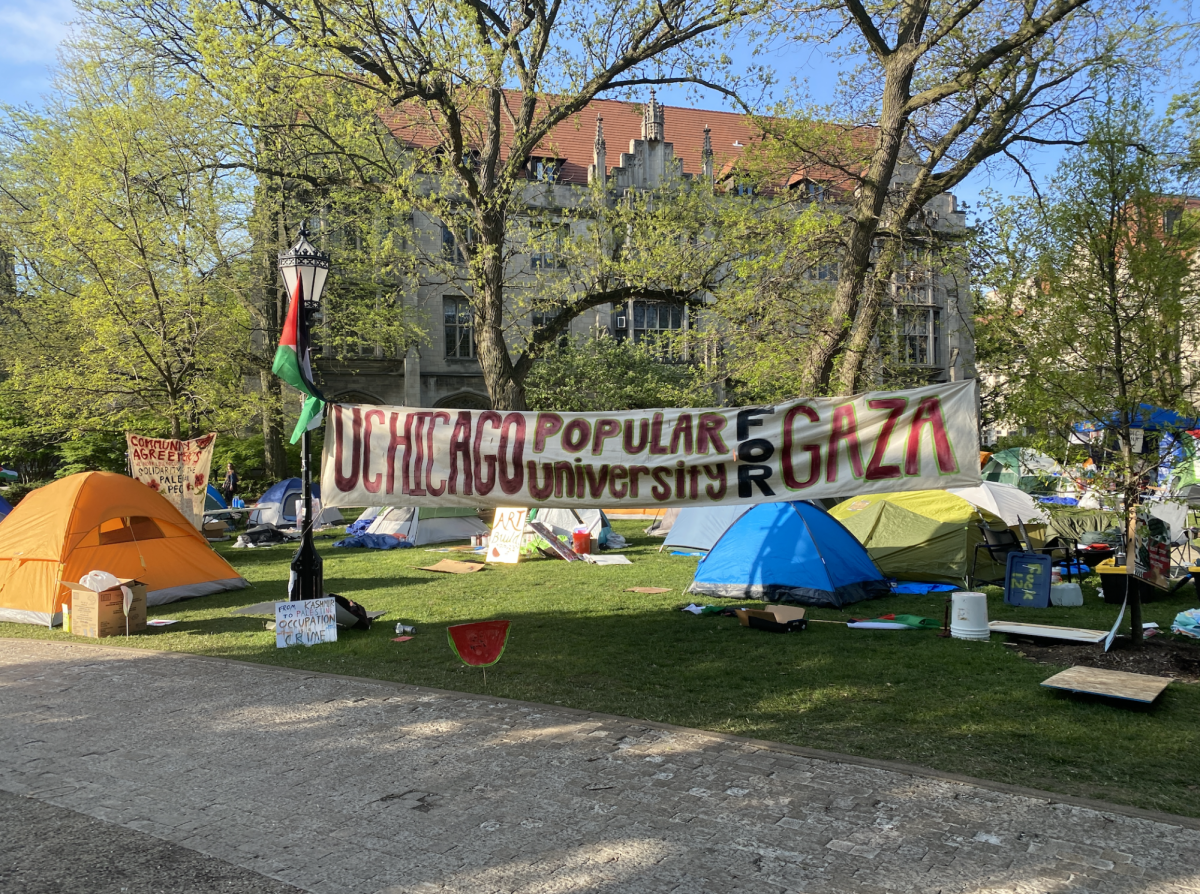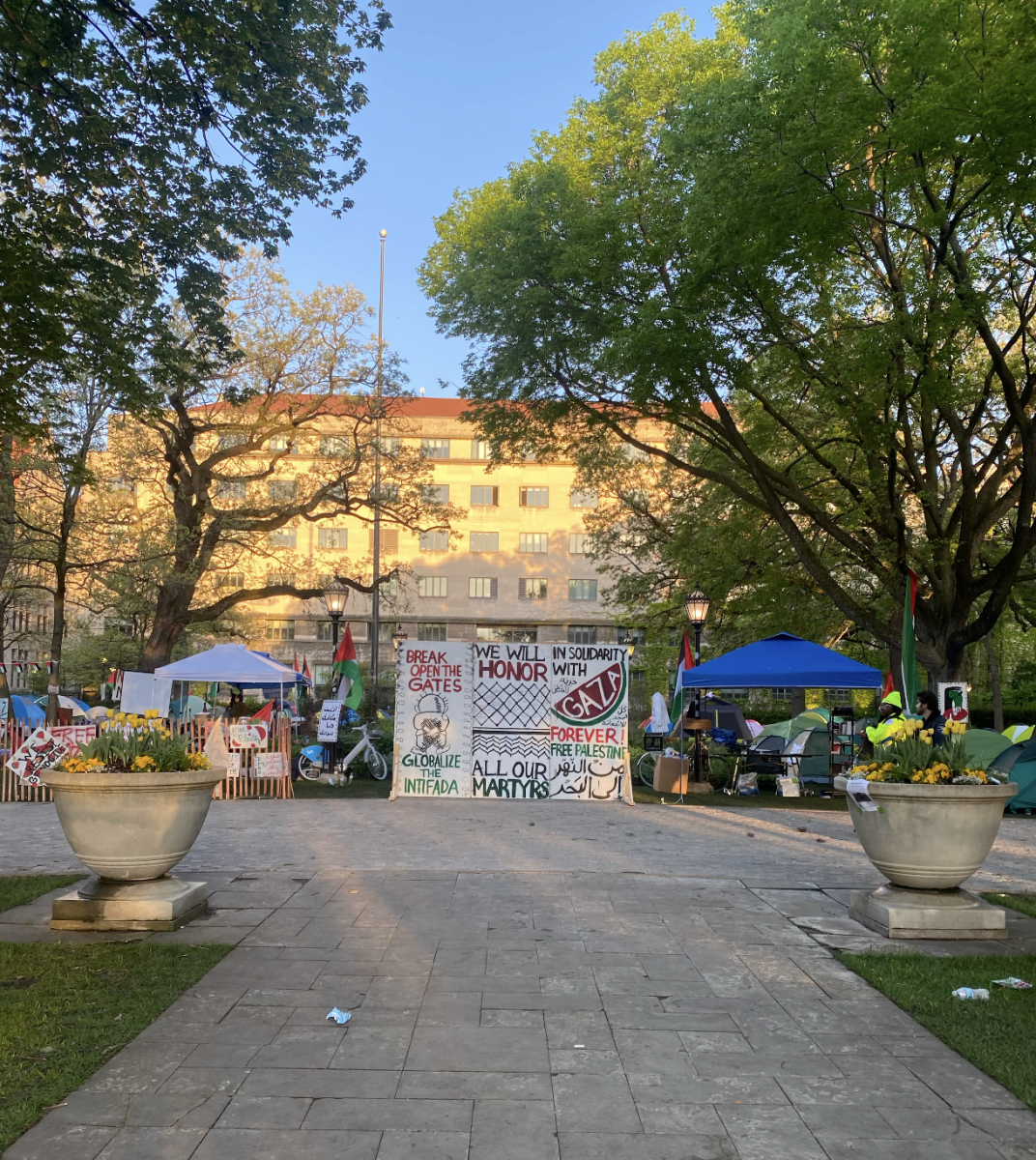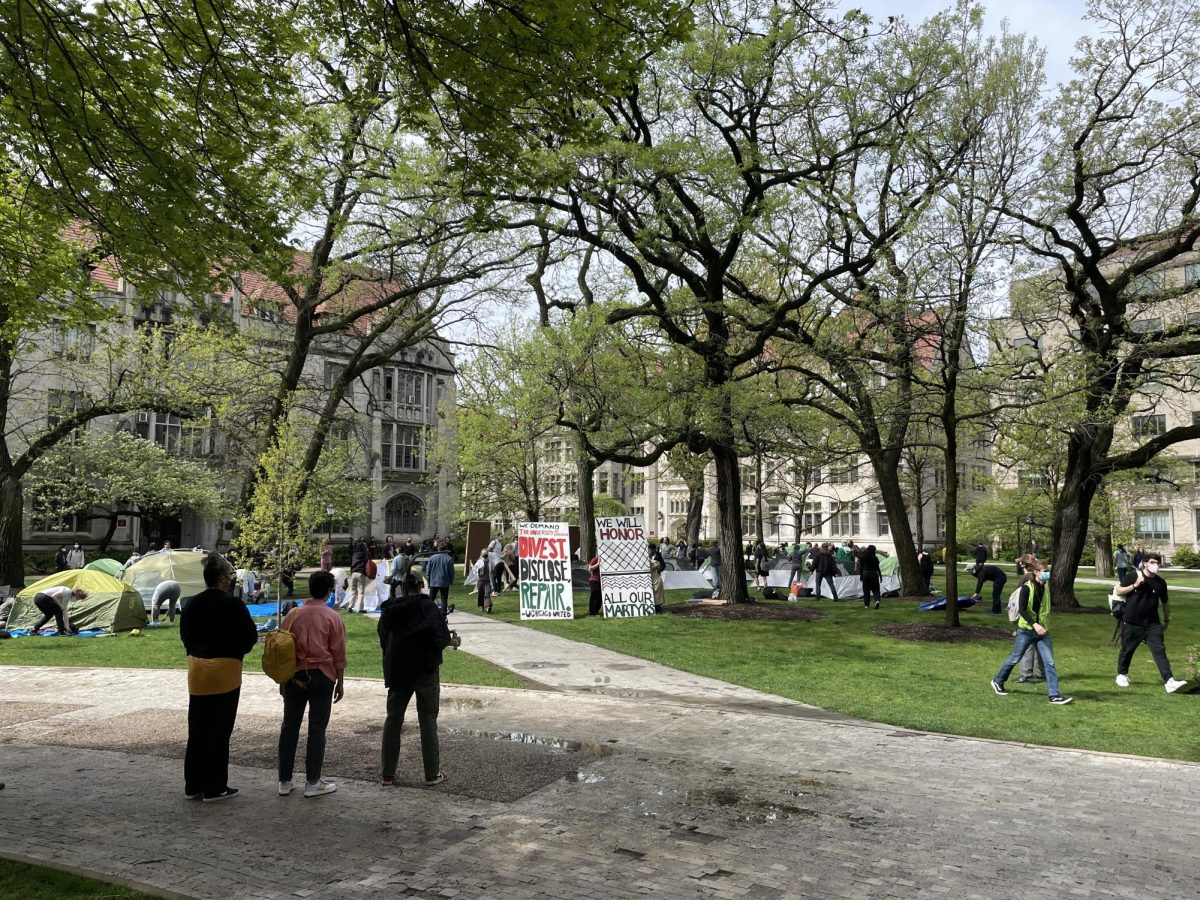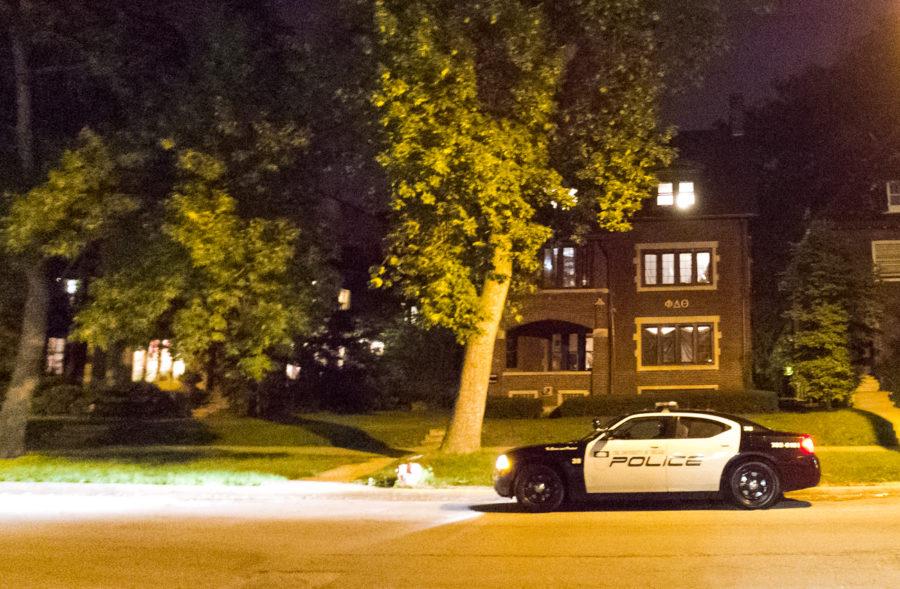[img id=”80271″ align=”alignleft”] Over the past three months, Karen Bradley has received more than 200 phone calls attempting to reunite her with a friend, a love, and a pet: her six-month-old bird named Baby.
Callers have responded to signs that Bradley posted throughout Hyde Park, featuring a picture of a speckled starling under the banner “LOST PET BIRD.” One sign reads, “Looks like a wild bird, but is TAME and not afraid of humans.” Another says, “Knows nothing of the outdoors, of cats or dogs or cars. Was hand-raised since the day she was hatched. She cannot hurt you and is not sick!”
Bradley’s history with the birds of Chicago spans more than a decade. A Ph.D. student at the Oriental Institute, she suffered a debilitating injury some 10 years ago that left her unable to walk for five years. As a result, she took to watching the birds outside through the window of her apartment. Gradually, she began to feed them and to take them into her home.
In time, she became known as a caregiver of local wild birds and received a call from a neighbor last May about a starling chick.
The newly hatched chick had fallen off the edge of a roof onto cement three stories below, and the neighbor asked if Bradley could take the bird in and try to save its life. Bradley was skeptical: “Falling three stories on the day it was born didn’t sound good,” she said. But she brought the bird home—and it lived.
No more than a few days old, the starling did not yet have eyes or any way to fend for itself. Bradley assumed the role of its mother, feeding it and slowly nursing it back to health.
“It’s a lot like taking care of a human baby,” Bradley said. “You have to get up every few hours and feed it…. [And] baby starlings aren’t even that cute. They’re kind of funny looking,” she said with a laugh.
Bradley called the bird Baby—a temporary name until she could find a permanent home for her. When she discovered that Baby’s legs had been injured in her fall, she began the long, careful process of mending them, using a small teacup as a prop and tape as a brace. Finally, after weeks of gentle rehabilitation, Bradley removed the tape.
“And lo and behold, her legs worked,” she said. Baby regained total use of her legs, and, save a twisted right foot, was fully physically able, as if she had never fallen. She learned to walk, to run, and even to fly.
Baby soon accepted Bradley as her surrogate mother. She chirped excitedly when she saw Bradley, slept nestled on her chest, and played with her fingers as a kitten would.
“At first I thought I was going to find a home for her,” Bradley said. She posted notices about Baby, “but pretty soon, I was taking it all back,” she said. “I totally fell in love with this bird—I’d never seen anything like it.”
But disaster struck in the first week of August, when Baby was three months old. New windows were put in at Bradley’s home, and one night, a window next to Baby’s food dish was left open.
“The starling got out the window without even knowing she was going out,” said Bradley. “It was nighttime, it was dark by the window, and I had her little food dish right near the window that I had accidentally left open. I’m positive she just walked out and didn’t even realize she had gone from inside to outside.”
“I literally went totally nuts [when I realized she was gone],” Bradley said. “I spent the night tearing the house apart.” She spent the next day canvassing the immediate blocks around her home near 57th Street and Blackstone Avenue, searching for signs of Baby.
“Birds generally stay within three blocks of where they’re born,” Bradley said. This appeared to be true for the first few days—Bradley heard from four different groups of people who encountered Baby in the surrounding area the day after she got out, but none realized that she was a lost pet until after the fact.
“She followed a mother and son for a while,” Bradley said. “They said she was just like a little puppy dog…and they just left her.”
Since Baby’s escape, Bradley has spent hours each day on her bike searching Hyde Park’s streets and posting lost signs for Baby, offering a $100 reward for her return. Her disability makes this a grueling process: Bradley walks with the help of a cane, and riding a bicycle is a challenge. Yet she continues to search. Her fliers now dot street signs and lampposts extending from 64th Street to 45th Street.
“I actually had to go to the hospital at one point,” she said. “I just got so sick.”
The signs, she said, get ripped down a lot. Some have also been affixed with notes and poems telling her to give up or that the bird is better off free, but she stresses that Baby cannot live on her own in the wild.
“If it was a dog or something, people would understand,” Bradley said. “I wish more people would realize what birds are like. They’re really, really good pets and easy to care for…. Too many people have seen that stupid Hitchcock movie,” she joked.
It’s been nearly three months since Baby’s disappearance, and the phone calls are dwindling—at one point, Bradley received roughly 10 a day—but Bradley remains cautiously hopeful.
“If she’s alive, with the leaves coming down, it’s going to be easy to see a lone bird,” she said. “People have been really nice [about the search for Baby], especially the University-type people.”
“I know she’s probably dead,” Bradley said, “but I’m not going to stop going till it gets too cold to keep looking…. To me, it’s not even a bird—she’s just another soul that I’ve shared my life with. You couldn’t help but love her.”








